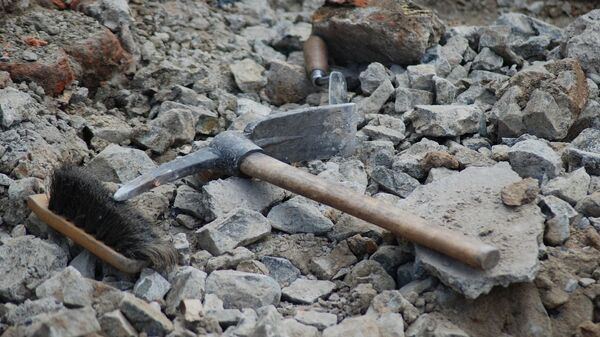Excavation conducted at the remains of a 14th century “Mamluk roadside inn” located in the vicinity of Israel's Nafah army base in the Golan Heights yielded the discovery of what The Times of Israel describes as “the first Roman border stone found in the central Golan with a place name that is known and identified today”.
According to the media outlet, the discovery was made during a salvage excavation conducted ahead of the implementation of a water pipeline project.
As Israel Antiquities Authority excavation co-director Yardenna Alexandre reportedly explained, the 1,700-years old Greek inscription in question reads “A border stone between Amatiya [or Amatira] and Kfar Nafah”.
"We have several stones [in the Golan] with names of places we don’t know," she said, adding that the kind of stone they've discovered might become something akin to "an anchor for working on the other stones which have been found… It will help us in the historical/geographical reconstruction of the settlement over the centuries."
The 3rd century border stone was discovered "in secondary use", serving as a "circa 5th century Byzantine grave cover” located under the aforementioned roadside inn ruins.
This discovery of a "securely located Roman border stone" also led Alexandre to believe that it is "a sign that there are going to be more… It’s just the beginning, the potential of the research is just getting started", the media outlet adds.




